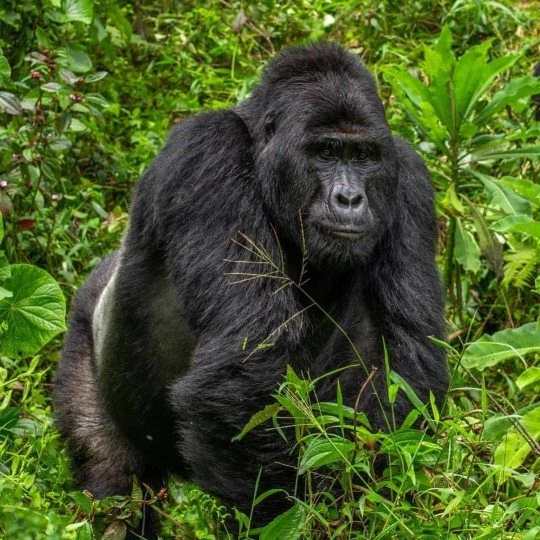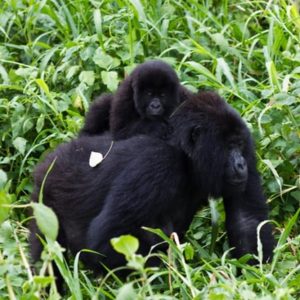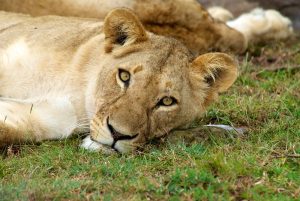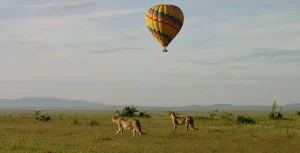Why Combine Gorilla and Chimpanzee Trekking in Uganda?
Uganda offers one of the world’s most unique wildlife experiences: trekking both mountain gorillas and chimpanzees in their natural habitats. Combining these two activities creates a richly rewarding adventure, allowing travelers to witness two of Africa’s closest primate relatives in different ecosystems. Combining Uganda Gorilla and Chimpanzee trekking.
This combination appeals to wildlife enthusiasts, photographers, and nature lovers who want a deeper understanding of Uganda’s biodiversity. Mountain gorillas reside in the misty forests of Bwindi Impenetrable National Park and Mgahinga Gorilla National Park, while chimpanzees inhabit the tropical rainforests of Kibale National Park and Budongo Forest.
By linking gorilla and chimp trekking into a single itinerary, visitors maximize their time and enjoy varied landscapes, wildlife viewing opportunities, and cultural encounters. The diversity of primates, combined with Uganda’s warm hospitality and excellent tourism infrastructure, makes this combo a highlight of any African safari.
Where Can You Trek Gorillas and Chimpanzees in Uganda?
- Gorilla Trekking Sites:
Uganda has two prime gorilla trekking destinations. Bwindi Impenetrable National Park, a UNESCO World Heritage Site, is the largest and most popular park with over 400 mountain gorillas. The forest’s dense vegetation and steep terrain provide a challenging yet breathtaking trekking experience.
Mgahinga Gorilla National Park, smaller and less crowded, offers a more intimate encounter with gorillas alongside stunning volcanic scenery. It is ideal for travelers seeking a quieter experience. - Chimpanzee Trekking Sites:
The best-known chimpanzee trekking location is Kibale Forest National Park, which holds one of the largest populations of habituated chimpanzees in Africa. The park also hosts diverse primate species, making it a hotspot for primate lovers.
Another site is Budongo Forest Reserve, famous for chimpanzee tracking and research activities. Less frequented by tourists, Budongo offers a more off-the-beaten-path experience.
These parks are accessible by road and often combined in tour packages designed to cover all highlights efficiently.
How Do Gorilla and Chimpanzee Trekking Differ?
While both activities involve tracking wild primates, several key differences affect the experience:
- Gorilla Trekking:
Trekking gorillas generally involves hiking for 2 to 6 hours through dense mountainous rainforest. The terrain is steep and muddy, requiring good fitness. Groups are limited to eight visitors per gorilla family to minimize disturbance. Visitors spend a maximum of one hour observing the gorillas. The encounter is deeply moving, as gorillas show curiosity and gentle interactions, often just a few meters away. - Chimpanzee Trekking:
Chimpanzee trekking varies but typically lasts 1 to 3 hours. Chimpanzees move more actively through less rugged terrain compared to gorillas. While chimpanzees are intelligent and social, their behavior can be unpredictable, making sightings thrilling but sometimes challenging. Groups also have size limits and follow strict viewing protocols.
Both treks require experienced guides who use tracking skills, knowledge of primate habits, and patience to locate the animals.
What Are the Permit Requirements and Costs for Combined Trekking?
Gorilla trekking permits in Uganda currently cost $800 per person, one of the highest in Africa, reflecting the exclusivity and conservation needs of gorilla tourism. Chimpanzee trekking permits cost approximately $150 per person.
Since permits are limited and demand is high, especially for gorillas, it is crucial to book months in advance. Many tour operators offer combined packages that include both permits, accommodation, park fees, and transport.
Obtaining permits through authorized channels such as the Uganda Wildlife Authority (UWA) or reputable tour companies ensures legitimacy and supports conservation efforts.
How to Plan a Combined Gorilla and Chimpanzee Trekking Itinerary?
A typical combined itinerary ranges from 5 to 8 days, depending on travel preferences and additional activities. Here is an example plan:
- Day 1: Arrival in Entebbe/Kampala, transfer to accommodation.
- Day 2: Travel to Kibale Forest National Park for chimpanzee trekking. Optional nature walks or Bigodi Wetland Sanctuary visit in the afternoon.
- Day 3: Additional chimpanzee trekking or primate tracking in Kibale. Travel to Bwindi or Mgahinga National Park.
- Day 4: Gorilla trekking in Bwindi or Mgahinga National Park.
- Day 5: Optional second gorilla trek or community cultural tour around Bwindi. Return to Kampala or Entebbe.
- Day 6: Departure or extension for safari or other activities.
Many itineraries also include visits to local communities, tea plantations, and scenic drives to enrich the cultural experience.
What Should Travelers Expect During Gorilla and Chimpanzee Treks?
Visitors should prepare for physically demanding walks, varying from steep inclines to swampy terrain. Trek durations depend on primate locations and weather conditions. Wearing sturdy hiking boots, long-sleeved clothing, and carrying water and snacks is essential.
Guides provide a safety briefing, explain park rules, and instruct on proper behavior around the animals—such as maintaining a safe distance, avoiding direct eye contact with gorillas, and not feeding wildlife.
The emotional impact of close primate encounters is profound. Gorillas often exhibit curiosity and peaceful behavior, while chimpanzees can be playful or vocal. Photography is allowed but without flash to avoid disturbing the animals.
How Does Combined Trekking Support Conservation and Communities?
Tourism revenue from gorilla and chimpanzee trekking funds anti-poaching patrols, habitat protection, and community development projects. Many local people benefit through employment as guides, trackers, porters, and hospitality workers.
Community-based tourism initiatives near parks promote cultural exchanges and provide income alternatives to activities that might harm habitats, such as logging or hunting.
By participating in these tours, travelers contribute directly to the preservation of endangered primates and support the livelihoods of surrounding communities.
What Are the Best Times to Combine Gorilla and Chimpanzee Trekking?
The dry seasons—June to September and December to February—offer the best trekking conditions with accessible trails and minimal rain interruptions. During these months, primates tend to be easier to find.
The rainy seasons can make treks slippery and more physically challenging, though the forest is lush and fewer tourists visit then, offering a more solitary experience.
Planning combined treks during dry seasons increases comfort, safety, and chances of successful sightings.
How to Choose a Reliable Tour Operator for Combined Trekking?
Selecting a reputable tour company is crucial for a smooth, ethical, and enjoyable trekking experience. Reliable operators provide:
- Verified permits and transparent pricing
- Experienced local guides and porters
- Accommodation options suited to budgets and preferences
- Transportation logistics between parks and airports
- Cultural and community visits integrated into the itinerary
Reading online reviews, requesting detailed itineraries, and verifying certifications with Uganda Wildlife Authority help travelers make informed choices.
What Additional Activities Can Complement Gorilla and Chimpanzee Trekking?
Many travelers extend their trips with safaris in Queen Elizabeth National Park or Murchison Falls National Park to spot lions, elephants, hippos, and more. Boat cruises, nature walks, and birdwatching enhance the overall wildlife experience.
Cultural visits to local villages provide insight into indigenous lifestyles and traditions, enriching the understanding of the region’s heritage.
Conclusion
Combining gorilla and chimpanzee trekking in Uganda delivers an extraordinary wildlife adventure blending physical challenge, emotional connection, and conservation awareness. This dual experience showcases Uganda’s unique primate biodiversity while supporting vital preservation efforts. Combining Uganda Gorilla and Chimpanzee trekking.
With proper planning, ethical tour choices, and respect for nature, travelers enjoy unforgettable encounters with some of the world’s most remarkable animals amid breathtaking landscapes.




